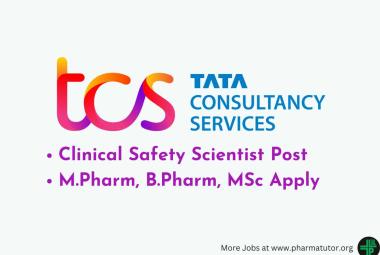ABOUT AUTHOR:
Akshay Rajgaria
Kanak Manjari Institute of Pharmaceutical Sciences
Rourkela, Orissa
akshaykrish2007@gmail.com
ABSTRACT:
Patients with Goodpasture’s syndrome presenting with dialysis-dependent end-stage renal failure at diagnosis almost never regain independent renal function. We report a patient with a 100% crescentic lesion in whom reversal of dialysis dependence was achieved by immunoadsorption together with immunosuppression. In a second patient, early initiation of immunoadsorption was able to completely restore normal renal function as early as 1 month after the start of treatment. These data give evidence of the use of immunoadsorption as a hopeful alternative to conventional plasma exchange in patients with Goodpasture’s syndrome showing advanced renal failure.
REFERENCE ID: PHARMATUTOR-ART-2029
INTRODUCTION:
Goodpasture’s syndrome (also known as Goodpasture’s disease and anti-glomerular basement antibody disease) is a rare autoimmune disease in which antibodies attack the lungs and kidneys, leading to bleeding from the lungs and to kidney failure. It may quickly result in permanent lung and kidney damage, often leading to death. It is treated with immunosuppressant drugs such as corticosteroids and cyclophosphamide, and with plasmapheresis, in which the antibodies are removed from the blood. The specific target of the immune attack is the GBM antigen, which is found in the lungs and kidneys. The antigen is a component of the non-collagenous 1 (NC1) domain of the alpha-3 chain of type IV collagen in the glomerular basement membrane. Goodpasture's syndrome is a type II hypersensitivity-like reaction. The disease was first reported by the American pathologist Ernest Goodpasture of Vanderbilt University, in 1919.
CAUSES: Goodpasture syndrome is an autoimmune disorder. It occurs when the immune system mistakenly attacks and destroys healthy body tissue. Persons with this syndrome develop substances that attack a protein called collagen in the tiny air sacs in the lungs and the filtering units (glomeruli) of the kidneys. These substances are called anti-glomerular basement membrane antibodies. The glomerular basement membrane is a part of the kidneys that helps filter waste and extra fluid from the blood. Anti-glomerular basement membrane antibodies are antibodies against this membrane. They can damage the basement membrane, which can lead to kidney damage. Sometimes this disorder is triggered by a viral respiratory infection or by breathing in hydrocarbon solvents. In such cases, the immune system may attack organs or tissues because it mistakes them for these viruses or foreign chemicals. The immune system's faulty response causes bleeding in the air sacs of the lungs and inflammation in the kidney's filtering units. Men are eight times more likely to be affected than women. The disease most commonly occurs in early adulthood.
SYMPTOM:
Symptoms may occur very slowly over months or even years, but they often develop very quickly over days to weeks. Loss of appetite, fatigue, and weakness are common early symptoms.
Lung symptoms may include:
1. Coughing up blood.
2. Dry cough.
3. Shortness of breath.
Kidney and other symptoms include:
1. Bloody urine.
2. Burning sensation when urinating.
3. Nausea and vomiting.
4. Pale skin.
5. Swelling (edema) in any area of the body, especially in the legs.
PATHOPHYSIOLOGY:
Anti-GBM disease is an autoimmune disorder characterized by auto antibodies directed against the glomerular/alveolar basement membrane. The auto antibodies bind to their reactive epitopes in the basement membranes and activate the complement cascade, resulting in tissue injury. This is a classic type II reaction in the Cell and Coombs classification of antigen-antibody reactions. This binding of antibodies can be visualized as the linear deposition of immunoglobulin along the glomerular basement membrane and, less commonly, the alveolar basement membranes, by direct immunofluorescent techniques. The basement membranes are complex structures that support layers of endothelium and epithelium. The principal component of basement membrane is type IV collagen, which acts as a support structure and is composed of building blocks that are linked end-to-end. The building blocks are composed of 3 alpha subunits of collagen, which form a triple helix. Type IV collagen can be expressed as 6 different chains, alpha1 to alpha6. The alpha chain itself has 3 structural domains, as follows: (1) 7-S domain at the amino terminus; (2) a triple helix of 3 alpha chains, which ends at the carboxyl terminus; and (3) noncollagenous domain. The classic triple helix is composed of 2 alpha1 chains and 1 alpha2 chain. In most patients, the autoantibody in Goodpasture syndrome is directed against a 28-kd monomeric subunit present within the noncollagenous domain of the alpha3 chain of type IV collagen (alpha3 [IV]NC1). Two conformational epitopes of anti-GBM antibodies have been defined at residues 17-31 and 127-141 of alpha3(IV)NC1, which were named as EA and EB, respectively. Auto antibodies may also be directed against other alpha chains. Although basement membranes are ubiquitous, only the alveolar and glomerular basement membranes are affected clinically. The preferential binding to the alveolar and glomerular basement membranes appears to be caused by greater accessibility of epitopes and greater expansion of alpha3 collagen units. Furthermore, the alpha3 collagen chains of glomerular and basement membranes are structurally integrated in such a way that they are more accessible to the circulating antibodies. Under normal conditions, the alveolar endothelium is a barrier to the anti–basement membrane antibodies. However, with increased vascular permeability, antibody binding to the basement membrane occurs in the alveoli. Therefore, for the deposition of antibody, an additional nonspecific lung injury that increases alveolar-capillary permeability is required. A variety of factors that can result in increased alveolar-capillary permeability have been identified. These include the following:
- Increased capillary hydrostatic pressure.
- High concentrations of inspired oxygen.
- Bacteremia.
- Endotoxemia.
- Exposure to volatile hydrocarbons.
- Upper respiratory infections.
- Tobacco smoking.
Strong evidence exists that genetics play an important role. Patients with specific human leukocyte antigen (HLA) types are more susceptible to disease and may have a worse prognosis. There is an increased prevalence of HLA-DR15(previously known as HLA-DR2) and DRB1*03, DRB1*04 and a decreased frequency of DRB1*01 and DRB1*07.Goodpasture disease is strongly associated with the DRB1*1501and to a lesser extent the DRB1*1502allele. Although a strong association exists between anti-GBM disease and HLA DRB1*1501, this allele is present in as many as one third of individuals in white populations. It is therefore clear that additional factors, either genetic or environmental, are required for disease expression. Although anti-GBM disease is seen as a prototypic autoantibody-mediated disease, T cells have a vital role in disease initiation and progression. T cells enhance B-cell function and antibody production and may play a direct pathogenic role in kidney and lung injury. Auto reactive T cells against alpha3 (IV) NC1 are rare in healthy individuals, owing to thymic deletion during fetal development. Auto reactive T cells in patients may form as a consequence of exposure of neoepitopes, altered antigen processing allowing pathogenic epitopes to be presented, or altered T-cell regulation.

EXAMS AND TEST:
A physical examination may reveal signs of high blood pressure and fluid overload. The health care provider may hear abnormal heart and lung sounds when listening to the chest with a stethoscope. Urinalysis results are usually abnormal, and show blood and protein in the urine. Abnormal red blood cells may be seen. The following test may also be done:
- Anti-glomerular basement membrane test.
- Arterial blood gas.
- BUN.
- Chest x-ray.
- Creatinine (serum).
- Lung biopsy.
- Kidney biopsy.
TREATMENT:
The main goal is to remove the harmful antibodies from the blood. A treatment called plasmapheresis removes whole blood from the body and replaces the plasma with fluid, protein, or donated plasma. Removing harmful antibodies may reduce inflammation in the kidneys and lungs. Corticosteroid medications (such as prednisone) and other drugs that suppress or quiet the immune system may be used. Controlling blood pressure is the most important way to delay kidney damage. You may get medicines to control high blood pressure, such as angiotensin-converting enzyme (ACE) inhibitors and angiotensin receptor blockers (ARBs).
COMPLICATIONS:
- Chronic kidney disease.
- End-stage kidney disease.
- Lung failure.
- Rapidly progressive glomerulonephritis.
- Severe pulmonary hemorrhage (lung bleeding).
REFERENCES:
- Zhao J, Cui Z, Yang R, Jia XY, Zhang Y, Zhao MH. Anti-glomerular basement membrane auto antibodies against different target antigens are associated with disease severity.
- Cui Z, Zhao MH. Advances in human antiglomerular basement membrane disease.
- Chan AL, Louie S, Leslie KO, Juarez MM, Albertson TE. Cutting edge issues in Goodpasture's disease.
- Yang R, Cui Z, Zhao J, Zhao MH. The role of HLA-DRB1 alleles on susceptibility of Chinese patients with anti-GBM disease
- Peto P, Salama AD. Update on antiglomerular basement membrane disease.
NOW YOU CAN ALSO PUBLISH YOUR ARTICLE ONLINE.
SUBMIT YOUR ARTICLE/PROJECT AT articles@pharmatutor.org
Subscribe to Pharmatutor Alerts by Email
FIND OUT MORE ARTICLES AT OUR DATABASE









